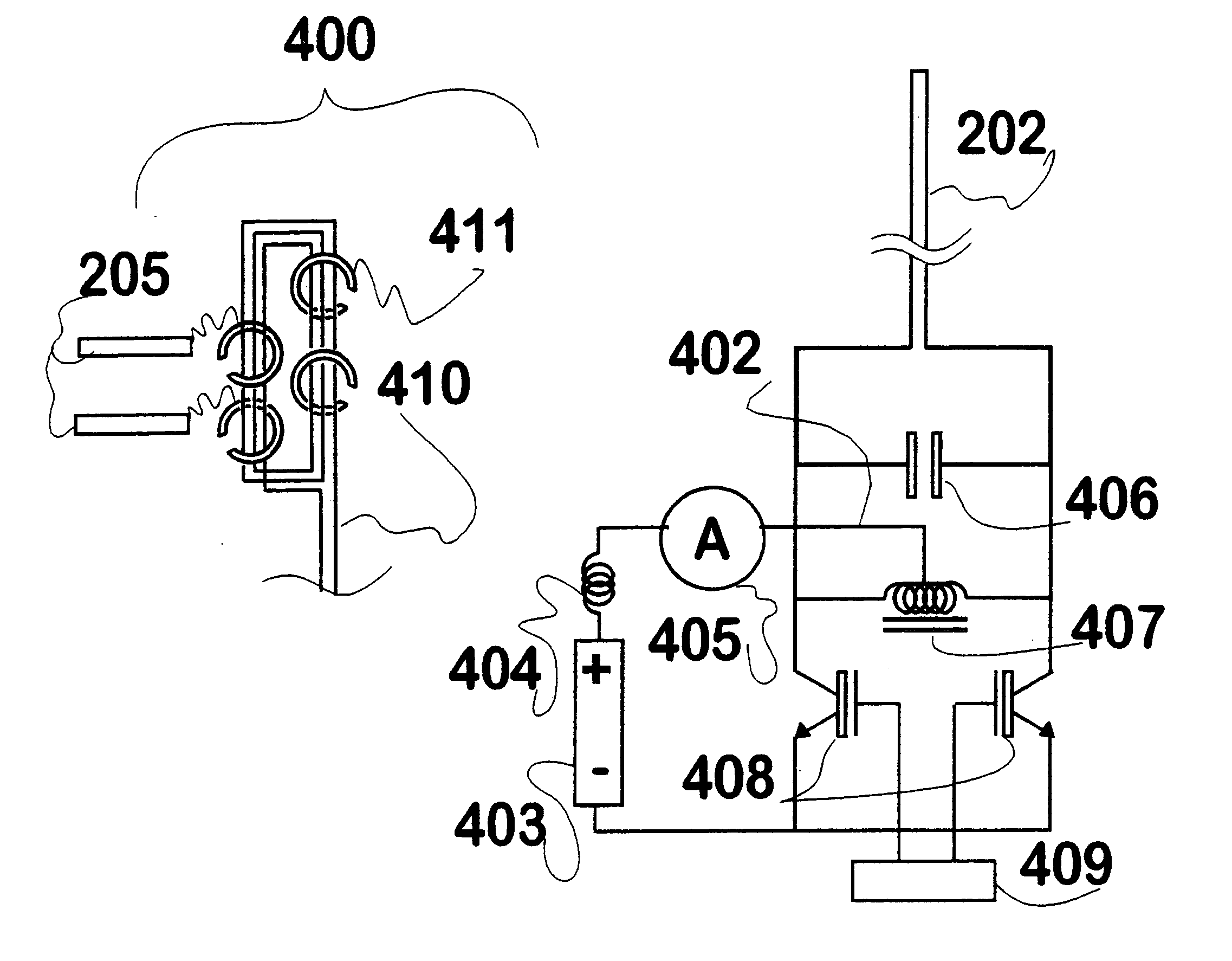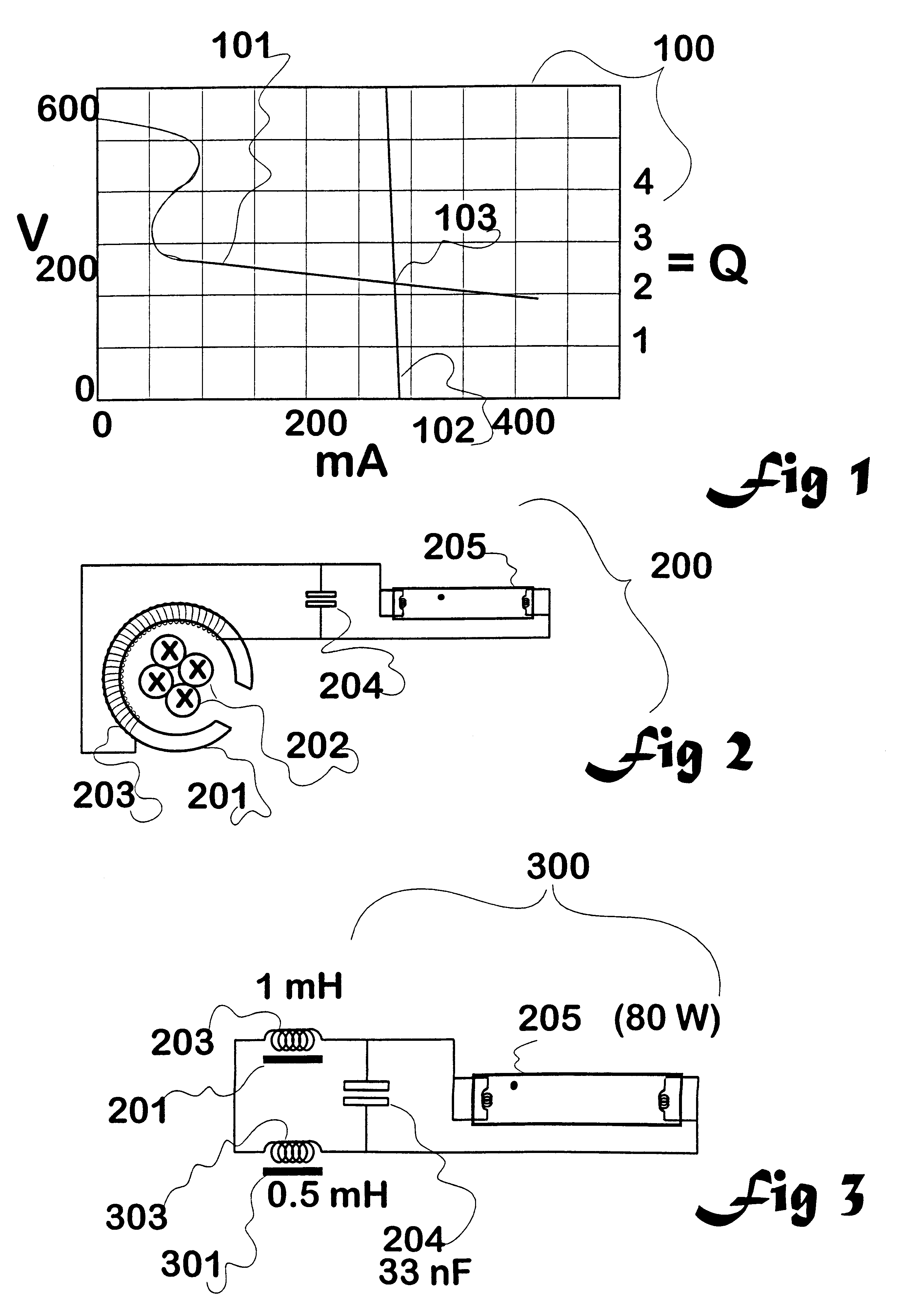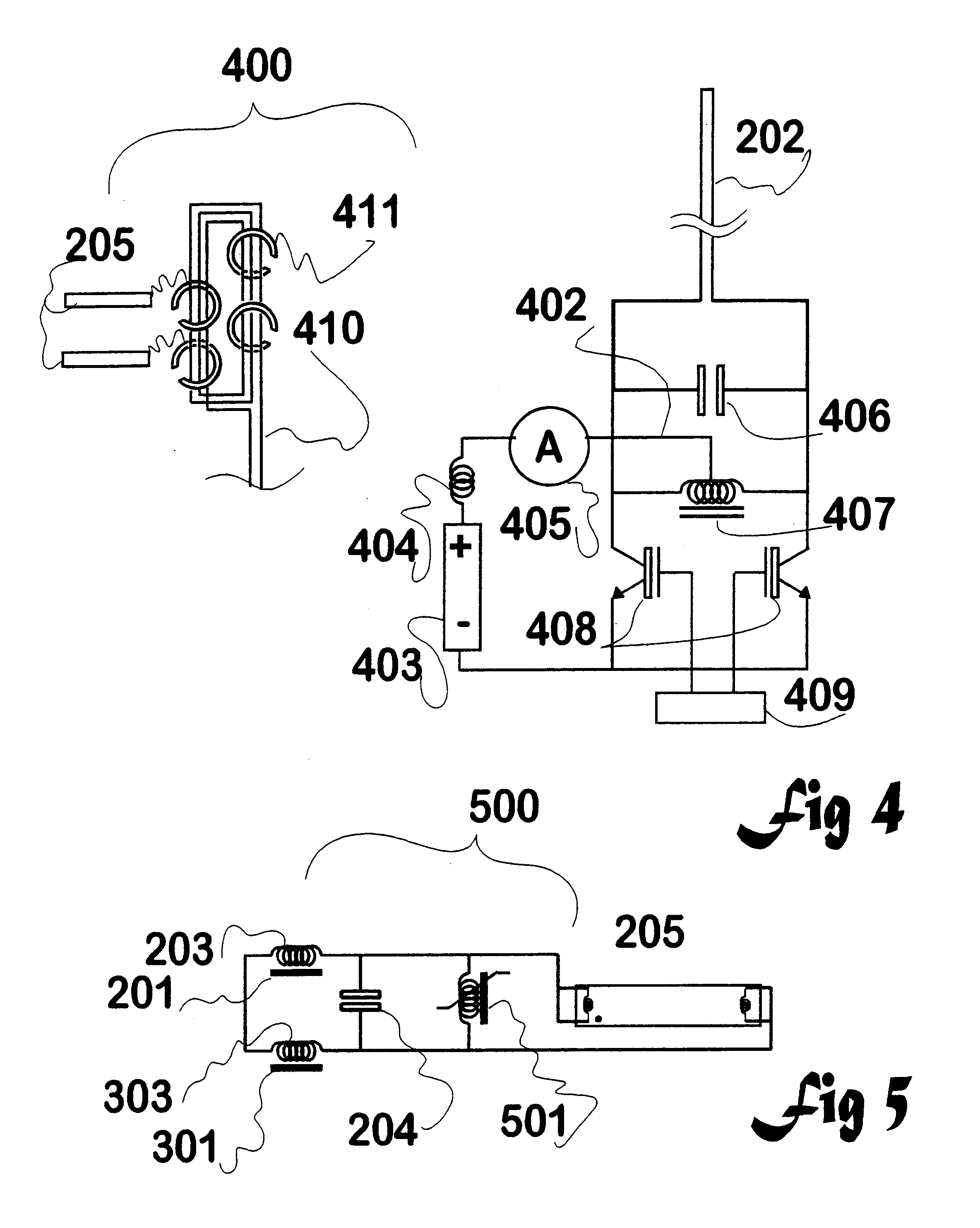Induction circuits for lighting
a technology of induction circuits and lighting, applied in the direction of electric variable regulation, water/sludge/sewage treatment, instruments, etc., can solve the problems of difficult to provide brightness control of fluorescent lamps, difficult to achieve brightness control of neon signs, and high capital cost of fluorescent lamp installation, etc., to achieve accurate measurement and low operating q
- Summary
- Abstract
- Description
- Claims
- Application Information
AI Technical Summary
Problems solved by technology
Method used
Image
Examples
Embodiment Construction
PRINCIPLES
This invention relates to means to pick up current from a primary conductor carrying high-frequency, high-current electricity (such as 25 kHz, at 60 A) or optionally a multi-turn primary conductor having an equivalent amount of magnetic flux, and convert it into a form of power well suited to the characteristics of a gas-discharge lamp, which characteristics (see FIG. 1) are relatively difficult to satisfy.
The output of the invention powers a lamp with a current (proportional to a brightness) in proportion to the flux about the primary conductor, while the lamp current remains largely independent of the lamp's own "resistance" (assuming that the lamp is warm and that at least a minimum amount of power is supplied to it).
An example gas discharge lamp is a mercury vapour plus inert gas filled elongated glass tube of the type commonly referred to as a fluorescent lamp. This name refers to the use of one or more phosphors coating the inside of the glass tube, where they are ex...
PUM
 Login to View More
Login to View More Abstract
Description
Claims
Application Information
 Login to View More
Login to View More - R&D
- Intellectual Property
- Life Sciences
- Materials
- Tech Scout
- Unparalleled Data Quality
- Higher Quality Content
- 60% Fewer Hallucinations
Browse by: Latest US Patents, China's latest patents, Technical Efficacy Thesaurus, Application Domain, Technology Topic, Popular Technical Reports.
© 2025 PatSnap. All rights reserved.Legal|Privacy policy|Modern Slavery Act Transparency Statement|Sitemap|About US| Contact US: help@patsnap.com



